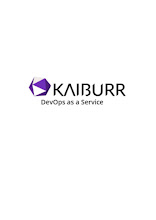In the current digital economy, all businesses rely on hardware and software to address operational issues, increase productivity, and enhance customer experiences. These systems aren't flawless, though, as they can have flaws that make them more vulnerable to data breaches and cyberattacks.In reality, many businesses view vulnerability scanning as a preventative measure rather than a crucial step in their web development and maintenance processes.Here, Kaiburr will explain the advantages of Vulnerability Management over ad-hoc scanning.
The advantages are:
Will it take more than a month to find, handle, and fix them? You will likely always have some websites or applications that are vulnerable to attacks since vulnerabilities will be introduced quicker than you can detect and patch them if you don't practice systematic management and routine scanning. Also, keep in mind that a breach can be caused by an attacker using just one point of entry.Long-term management gives you a current snapshot of your security situation. It makes it much simpler to pinpoint priority areas, such as developer education, to prevent particular vulnerabilities.
Any well-designed web application security program depends on centralized monitoring and reporting to give operational and management insight. Imagine having to manually compile reports to explain how the vulnerability status changed across hundreds of online assets from one scan to the next. You would have spreadsheet hell and be forced to rely on data that might already be outdated. However, this is their only choice for businesses that rely on ad-hoc scanning. You get crystal-clear, actionable dashboards and trend charts with a full web application security solution that highlights the vulnerability status right now and the advancements your teams are making.
You could depend on the platforms that deliver Engineering Excellence to their work.
Modern businesses cannot afford to spend time manually tracking vulnerabilities across one-off scans. Effective web application security demands effective automation as labour-intensive manual processes are mechanized throughout the economy, especially given the modest size of most web security teams. This can only be accomplished with a solution integrated into current workflows to establish a closed-loop environment for application security testing. Automating or eliminating the majority of manual operations increases operational efficiency, which results in measurable security gains and cost savings.
The outcomes you receive are directly comparable between scans and can be monitored to show progress. Applying these changes to a current configuration rather than starting from zero is simpler if assets are added or withdrawn or business requirements change.
The most significant benefit of continuous vulnerability monitoring is that it eliminates the need for a separate project, a dedicated team, or even outside experts to conduct a scan. Instead, vulnerability scanning becomes a constant and automated component of web application development and testing, with significant advantages for operational effectiveness and security.
You can ask the experts of Kaiburr to know more facts about Vulnerability Management.





.jpg)


0 Comments